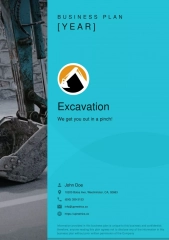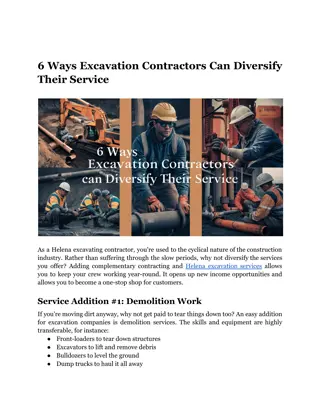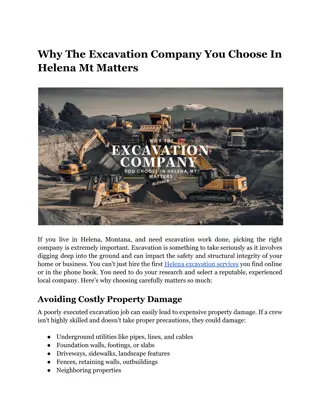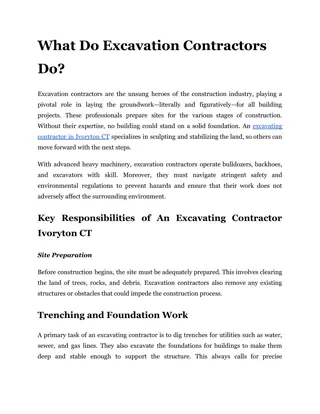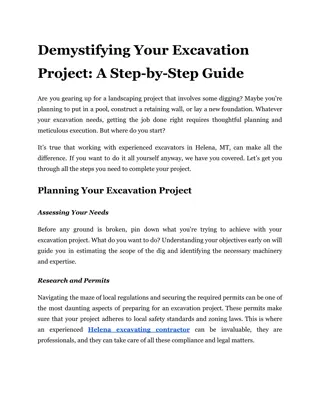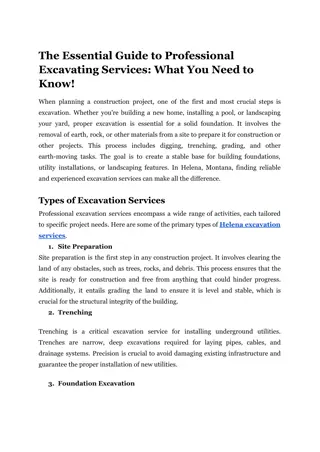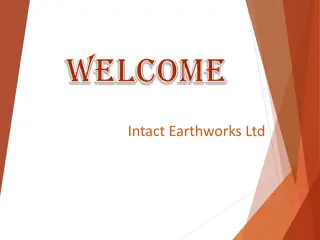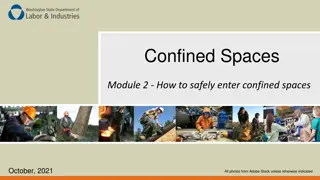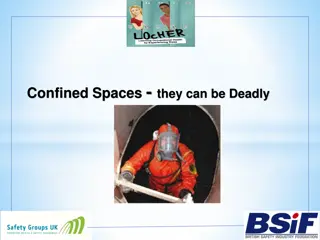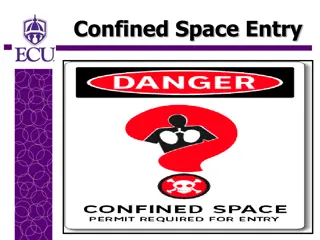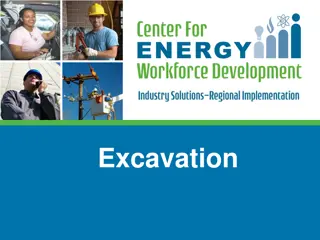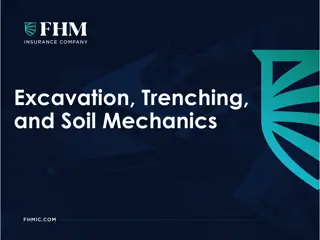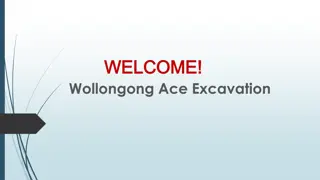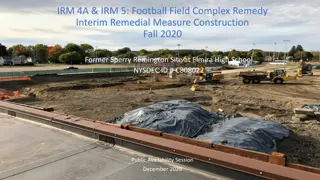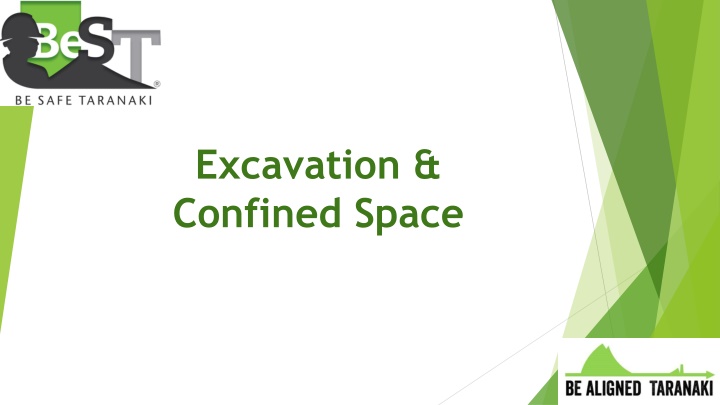
Excavation Work and Risks: Safety Measures & Critical Controls
Explore the world of excavation work, including risks like ground collapse and safety measures such as shoring and shields. Learn about critical controls for safe excavation design and important considerations like the zone of influence and notifiable works. Stay informed to ensure safety in excavation projects.
Uploaded on | 0 Views
Download Presentation

Please find below an Image/Link to download the presentation.
The content on the website is provided AS IS for your information and personal use only. It may not be sold, licensed, or shared on other websites without obtaining consent from the author. If you encounter any issues during the download, it is possible that the publisher has removed the file from their server.
You are allowed to download the files provided on this website for personal or commercial use, subject to the condition that they are used lawfully. All files are the property of their respective owners.
The content on the website is provided AS IS for your information and personal use only. It may not be sold, licensed, or shared on other websites without obtaining consent from the author.
E N D
Presentation Transcript
Excavation & Confined Space
What is excavation work? Excavation work generally means work involving the removal of soil or rock from a site to form an open face, hole or cavity, using tools, machinery or explosives. Excavation work includes: open excavations potholing pit excavations trenches and retaining walls shafts and drives.
Excavation Risks Make sure controls prevent anyone from being harmed, so far as is reasonably practicable. Common excavation risks include: Ground collapse Excavated materials & loads near excavations Falls Safe access & egress Manual work Overhead & underground services Atmospheric contaminants Ground & surface water Contaminated soils & groundwater Using explosives
Preventing Ground Collapse All excavations, no matter what depth, can be risky. Ground collapse can occur quickly and without warning, giving a worker virtually no time to escape. Benching and battering is the horizontal stepping or sloping of the face, side, or wall of an excavation. Shoring prevents collapse by maintaining positive pressure on the sides of the excavation, protecting workers. Shields do not ensure ground stability but protect workers from ground collapse, by preventing the collapsing material falling onto them.
Excavation CRITICAL CONTROLS Excavation design must be based on the following Ground conditions Location Depth Work to be performed within or near the excavation This Photo by Unknown Author is licensed under CC BY
Zone of Influence Any excavated material and external actions applying a load to the ground nearby can affect the excavation s stability through the zone of influence. The zone is normally from the base of an excavated face to the surface. The zone s angle will depend on site-specific factors.
Notifiable Works You must provide at least 24 hours notice to WorkSafe of particularly hazardous work, including: Work in any excavation in which any face has a vertical height of more than 5 metres and an average slope steeper than a ratio of 1 horizontal to 2 vertical Work in any drive, excavation, or heading in which any person is required to work with a ground cover overhead Submit the online notification form.
Prevent contact with services and structures Contact with nearby services and structures must be prevented by: Communicating exclusion zones to identified at-risk services and structures. Positively identifying underground services using non-destructive methods. Having authorized spotters in place. Work under an authorized permit to work if mechanical excavation is within 15 meters of a known service or structure
People required to enter the excavation If people are required to enter the excavation: Mobile plant and bulk materials must remain outside the zone of influence. Hazardous atmospheres must be identified and controlled using the hierarchy of controls. Excavation Checklist completed by an authorized person prior to entry for all excavations over 1.5m. Minimum training requirements: Confirm all people are trained and/or certified for their role
Using mobile plant When using mobile plant, you must: Control interactions between vehicles, mobile plant and pedestrians. Complete a mobile plant risk assessment. Confirm the mobile plant is fitted with a seat belt and wear it
Minimum Emergency Requirements Emergency response procedures must be: Developed based on risk Implemented on-site Checked they are working effectively https://www.worksafe.govt.nz/topic-and- industry/excavation/excavation-safety-gpg/
What is a confined space? A confined space: Is an enclosed or partially enclosed space; and Is not intended or designed for primarily for human occupancy; and May present a risk from one or more of the following at any time: Unsafe concentration of harmful airborne contaminants Unsafe concentration of flammable substances Unsafe levels of oxygen Substances that can cause engulfment
Minimum Site Requirements Each site must: Identify confined spaces and document a site register Display warning signs at confined space access points
Risks of working in a confined space Loss of consciousness, injury, or death from contaminants in the air Injury or death from a fire or explosion Suffocation from oxygen deficiency Crushing or suffocation from falling into or becoming engulfed by a substance
Planning to enter a confined space Conduct a risk assessment and determine controls. Can the work be done without entering the space? Isolate contaminants and moving parts Clean to remove harmful solids or sludges Purge to remove harmful gases or vapours Test the atmosphere Ventilate the space Use breathing apparatus if required Use PPE Work under an authorised Permit to Work Use a stand-by person Use trained and certified personnel
Atmospheric test confirmation Authorised persons must confirm these atmospheric tests: Atmospheric testing is completed prior to entry. Repeat or continuous monitoring requirements are met and documented. Test equipment must be calibrated and certified
Trained and certified personnel These personnel must be trained and certified: Supervisors/persons planning a confined space entry Persons entering the space Stand-by persons Persons conducting atmospheric testing Persons using breathing apparatus Rescue and First Aid personnel Permit issuers and permit holders
Prior to entering a confined space Hold a thorough toolbox talk Verify energy systems are isolated and de- energised Identify any new hazards, e.g. nearby exhaust fumes Check controls are in place Conduct atmospheric testing Establish positive communication If conditions change, evacuate the space
Emergency Rescue Requirements Have an emergency recovery plan Rescue equipment must be available and checked before work starts. Check access points are large enough to enter and exit and allow rescue. Test the rescue plan to ensure it is effective. A stand-by person must be placed at the access point whenever a person is inside the space. Emergency recovery plan must be in place.
Further information Australian Standard 2865: Confined Spaces sets out requirements for confined space work https://www.worksafe.govt.nz/topic-and-industry/planning-entry-and- working-safely-in-a-confined-space

